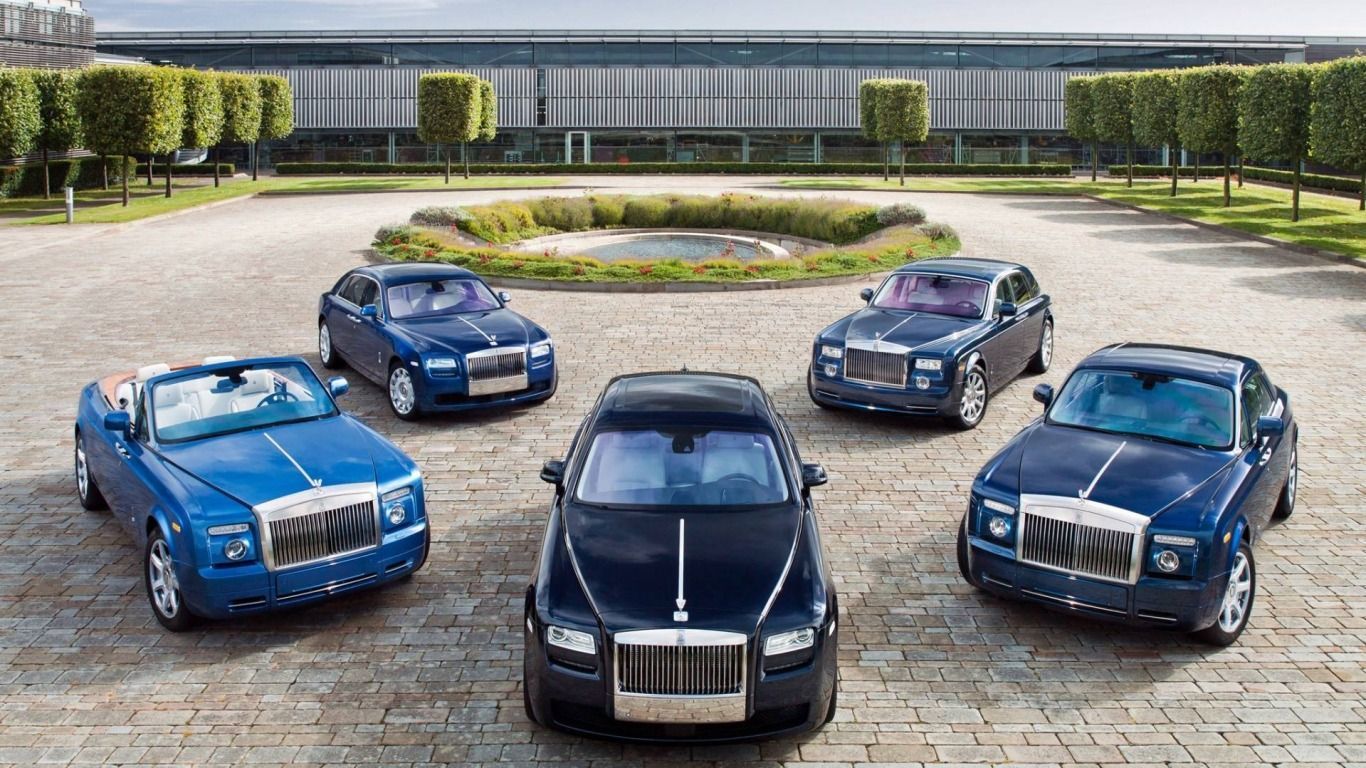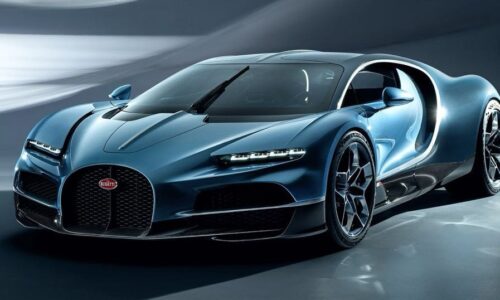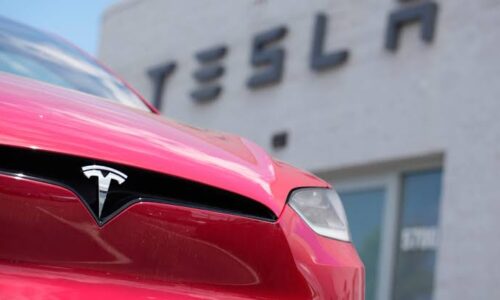- Judith Akatugba
- 0 Comments
- 882 Views
Road testers may find it challenging to navigate an automotive market segment where value is defined differently than in virtually any other and where status, exclusivity, and originality are crucial—even if that means raising the asking price.
In this case, passenger luxury is paramount; the owner may not care about the driving experience. In contrast, an automobile is something you can own, drive, and see, but you can’t necessarily run one yourself. These are Autocar’s top-ranked vehicles from the ultra-luxury car’s rarefied realm.
Read Also: Rock & Roll Hall of Fame Announces 2024 Nominees
In the past, this class was dominated by limos with purring V8 and V12 engines, but even the most opulent vehicles are no longer found in Kansas. Therefore, hybrid and electric vehicles are starting to appear on this page, even if the world’s super-rich still primarily purchase gasoline-powered vehicles. Even the wealthiest 1% of people on the planet can’t afford to appear completely out of touch in 2023. In the past, money may have given you the ability to completely disregard what other people think of you.
Apart from being electrified, a couple of the world’s most elegant and appealing SUVs are included in the mix, even if the majority of the competitors are limousine saloons that are big enough to make the typical semi-detached home appear tiny. Because luxury SUVs enable new and interesting “lifestyle” activities and can transport you somewhere that two-wheel-drive limos cannot.
This is the market you will be shopping in if you want the ultimate in luxury, style, event appropriateness, and prestige from your vehicle of choice. Not a single automobile on this lot can be purchased for less than six figures, and some may even set you back seven figures. After all, to be denied the chance to quadruple the price of your automobile and make it uniquely yours would be the ultimate turn-off for normal super-luxury class consumers.
Top ultra-luxury vehicles available right now
1. 1. Rolls-Royce Phantom

The greatest luxury vehicle ever created was superseded by Rolls-Royce in 2017, and our road testers were quick to greet the new model with a sparkling five-star rating. We anticipate testing the modified Phantom soon after it was updated in 2022 with minor equipment and design changes.
Owners will adore their vehicle just as much for the grandiose declaration of riches and prestige it bestows, as well as the unparalleled feeling of occasion that comes with driving one. However, many people won’t ever realize how much fun it is to drive the newest Phantom, which is likewise an absolute delight.
Naturally, you can experience its incredibly cozy and unique ride comfort from the rear seats. It is unlike anything else you will find in a vehicle: it is loping and sensuously luxurious-feeling, but it is also incredibly quiet and smooth, even with Rolls-Royce’s state-of-the-art run-flat tires installed. There is no greater symbol of riches than the sheer enormity of the extended-wheelbase model, which is almost six meters in length. The car is offered in both normal and extended wheelbase versions.
However, the car’s large-rimmed steering wheel—which was given an even larger facelift—has an amazing accuracy feel and ideal weight. Similarly, the simplicity with which you can park such a large vehicle on the road; the vehicle’s ability to tolerate any speed that best suits your journey; the V12 engine’s exceptional flexibility and refinement; and the throttle pedal’s progressiveness as you step off.
The purity of its engineering is truly stunning, and even though it’s a near-three-tonne love hymn to glorious isolation, this car will accelerate from 0-100mph and from 30-70mph through the gears quicker than the previous Ford Focus RS.
The most recent model is distinguished by revised headlights, updated wheel designs, an illuminated pantheon radiator grille, and available dark chrome body ornamentation.
2. Rolls-Royce Ghost

When The Ghost debuted in 2009, it was a turning point for Rolls-Royce, causing a change in the company’s yearly production volumes.
The Phantom’s understudy, now in its second generation, has changed significantly. The Ghost’s mechanical foundation, which was originally derived from the BMW 7 Series, is now shared by the Phantom, the Cullinan SUV, and Rolls-Royce’s mass dampers for the front suspension and an active anti-roll bar for the rear axle, two innovations that help bring the Ghost’s ride quality closer than ever to that of the Phantom.
The Ghost, on the other hand, was designed as a vehicle for the wealthy driver, and its dynamic nature reflects that, even though the Phantom is undoubtedly a vehicle to be driven. It rides more tautly and is more nimble than the Phantom (maybe because of its smaller size), making it more suitable for daily driving in the congested roadways of the United Kingdom than its larger sibling.
Despite embracing Rolls-Royce’s latest ‘post-opulence’ design philosophy on both the inside and outside, the automobile surpasses its larger sibling in terms of internal size, luxurious atmosphere, and material quality. It’s a functional neoclassical castle on wheels.
3. Bentley Flying Spur

In 2006, Bentley’s four-door limousine was first introduced as the Continental Flying Spur. It wasn’t until 2014, during their largest model redesign to date, that the Continental Flying Spur’s name was removed to separate it from the Continental GT.
But because of its more assertive, muscular styling, the third-generation Flying Spur is easier to tell apart from the similar two-door coupé. A new platform that combines active anti-roll bars and four-wheel steering and was co-developed with Porsche also has a significant positive impact on Crewe’s premium saloon. It also serves as the foundation for genuinely excellent driving dynamics and improves the insulation between the wonderfully luxurious cabin and the road. Steering, balance, and grip have all much improved.
Naturally, the car’s calling card is the same 6.0-liter twin-turbo W12, which produces 626 horsepower and limitless torque. It can accelerate the vehicle to 62 mph in less than 4.0 seconds and reach a high speed of more than 200 mph if desired. However, there are other Spur models available with a six-cylinder plug-in hybrid drivetrain and Bentley’s lighter, more freely revving V8 engine. The large Bentley is a good fit for the hybrid system, whose almost silent EV mode provides a spooky sense of peace while you’re sulking. Even if it lacks the V8’s personality, its V6 engine can yet produce speeds that are nearly identical to the V8.
The Flying Spur has never felt more finished and capable of playing the part of a supercar that is also luxurious. And the cabin still has a big part in that. The Flying Spur, although being Bentley’s entry-level limousine, boasts an incredibly opulent inside with exquisitely stitched leathers, genuine, natural veneers, and striking, tactile metal brightwork.
4. BMW i7

With the launch of the first electric 7 Series, the BMW i7, the BMW limousine has just made significant progress toward the future. Its street-tough appearance may not match the elegant sophistication of some of the other cars on this list, but it nevertheless makes a strong case for itself as a luxury vehicle. With onboard tech options that not even Rolls-Royce, Bentley, or Tesla provide, the i7 is perhaps the best premium electric vehicle available right now. It is luxurious and elegant to drive.
The car’s dual-motor, four-wheel-drive, xDrive60 configuration, which debuted in early 2023, gave it a little over 500 horsepower and a battery with a usable capacity of just over 100kWh, allowing it to have a real-world cruising range of just under 300 miles, as confirmed by our road test. Nonetheless, the car’s DC rapid-charging potential is remarkable; it can average over 150kW during a normal rapid charge.
The i7, like all G70-generation 7 Series models, is only available in de facto long-wheelbase form, which provides enough of room for rear passengers to relax. In row two, you can recline as in a sleeping position thanks to BMW’s Executive Seating option. You may also install a 31-inch touchscreen theater screen. It folds down from the roof of the vehicle, giving the back passengers the opportunity to experience streaming media on a scale not found in any other limousine.
A quiet, isolated ride that feels especially stable at highway speeds is provided by an air-suspended chassis with four-wheel steering and active anti-roll bars. However, this combination also enables the car to handle with a degree of poise and balance that is uncommon for most cars of this size but typical of a BMW.
5. Mercedes-Maybach S-Class

The Mercedes-Maybach S-Class, the most luxurious and unique vehicle in what is arguably the world’s most prestigious and revered limousine lineup, is the contemporary benchmark for Daimler’s Maybach ultra-luxury brand.
To judge by appearances, you would say it was at least as much S-Class as Maybach, and that’s the outcome of Daimler’s strategic decision, adopted a few years ago, to widen the reach of the Maybach name by establishing ‘halo’ Maybach models across several of its more conventional Mercedes car lines. At the same time, the extremely rare, Simon Cowell-spec, Maybach-only 57 and 62 limousines were written out of history.
Therefore, this car’s greatest strength and largest weakness may be that it is ‘just’ an S-Class. While an S-Class may not have the same curb appeal as a Rolls-Royce or Bentley, it does come equipped with advanced active suspension and driver assistance technologies, which contribute to its incredibly sophisticated, luxurious, and comforting appearance.
Although the UK will also receive the 496bhp 4.0-liter V8 S580, the premium S650 model’s 603bhp twin-turbocharged petrol V12 is hardly noticeable, and it excels in comfort and decent manners. You can be sure that even the longest-legged passengers will have plenty of room because the basic S-Class is 18 cm longer than even the long-wheelbase model.
6. Rolls-Royce Cullinan

In 2018, Goodwood’s Marmite entry into the ultra-luxury market was introduced in response to a considerable amount of consumer feedback from Rolls-Royce, indicating that a more family-friendly, all-surface-capable, everyday-use model would be a very welcome addition to the company’s showroom lineup.
There has been enough criticism of the Cullinan’s design to create the impression that its creators took a big chance when they unveiled a vehicle that some people found awkward and ugly and others criticized with even less empathy. That being said, a year’s worth of confirmed orders is a strong indicator that Rolls-Royce’s market research is accurate, so the outcry of people who wouldn’t have purchased a Cullinan anyhow will not stop it from becoming a commercial success.
Life in this car has many positive aspects, just as much as there may be negative ones related to its concept or design. This is a real Rolls-Royce, with exceptional drivability, unmatched ride comfort, and superb mechanical refinement among its dynamic characteristics.
The Cullinan has all the off-road prowess that many owners are likely to need because to its height-adjustable air suspension and four-wheel drive system, which is borrowed from the BMW. Although its present towing capacity is limited to 2.6 tonnes, it will eventually rise to a more substantial 3.5 tonnes. Which is probably sufficient for a speedboat that costs a lot more than the vehicle.
7. Bentley Bentayga

The Autocar road test evaluation process for the Bentayga has been somewhat exciting. It was the first of a flurry of over £100,000-plus super-SUVs to hit the market in 2016. We gave it a high rating in W12 engine form, with a few caveats, and then gave it an even higher rating when Bentley debuted a 429-bhp, 4.0-liter turbocharged diesel V8 in 2017 that was sourced from Audi and produced exactly the same torque as the 12-cylinder petrol engine, but at more manageable crank speeds. Subsequently, Bentley stopped selling the Bentayga Diesel in Europe in 2018 because to the growing toxicity associated with diesel engines, hiding what we believed to be the final edition of the vehicle. In the same year, a V8 gasoline variant increased the range; a plug-in hybrid vehicle debuted in 2019. The entire line received an upgrade for 2020, and there’s now the Speed, a 626bhp, £188,030 W12 ode to excess.
Even in this class, the Bentayga stands out thanks to its incredibly plush interior, torque-filled performance, and sense of imperious, uniquely enveloping luxury. These attributes may even be strong enough to convert a cynic who wasn’t initially fond of the idea of living in a blue-blooded SUV.
Although it offers a slightly more sporty driving experience at the expense of that last bit of ride comfort, the Bentayga only gives up a shade: the merest hint of fussiness over certain lumps and bumps at speed and the occasional suggestion of head toss. It isn’t quite as comfortable riding or isolating as the Cullinan. There’s a good chance you wouldn’t even realize what you were missing if you regularly drove a premium vehicle.
8. Range Rover

Currently in its sixth generation, the original luxury SUV is without a doubt the greatest. The Range Rover is still a massive piece of metal, even though its appearance has evolved from that of its predecessor. Stylish details like the thin taillights add a lot of visual intrigue. Under the hood, it has the brand’s aluminum MLA-Flex architecture, along with a selection of mildly hybridized gasoline and diesel engines, a plug-in hybrid, and a 523 horsepower 4.4-liter V8 petrol engine from BMW for the pinnacle of luxury and performance.
The Rangie’s interior, regardless of engine, is now more roomy and lavishly finished than ever. The combination of cutting-edge technology and design with the consistently exquisite use of leather and wood creates a club-class atmosphere that amply justifies an asking price that now starts close to six figures. Excellent separation from wind, road noise, and engine noise is combined with a smooth and silky ride, making refinement and comfort equally outstanding.
The comforting features of the Range Rover will be appreciated by your passengers, but you will probably enjoy yourself even more when driving. The outstanding visibility and precise steering of the Range Rover make it easy to maneuver on the road even with its large size, and the optional steered rear axle provides unexpected agility in confined spaces. With active anti-roll bars, the car handles with remarkable poise and tautness when accelerating, and it is undoubtedly the most skilled rival when it comes to getting its wheels muddy. After over 50 years since the groundbreaking first model, the enduring Range Rover continues to impress.
9. BMW iX

Although they have been reluctant to come to market, electric super-luxury cars with the power, sophistication, and adaptability to truly dominate the road are now achievable thanks to the BMW iX. This full-sized SUV’s external design divides opinion; some people may not find it attractive at all. However, the iX ought to stick out for a variety of causes to those who give serious thought to the EV they wish to purchase, who are concerned about how sustainable its different components and manufacturing methods are, and who dig a bit deeper to uncover the allure of a high-end vehicle.
This car uses environmentally friendly olive-tanned leather, light electrically excited motors that don’t require big magnets, and ethically obtained metals from Australia and North Africa for the drive batteries. There are other variants to choose from, the most powerful being the middle-sitting iX xDrive50 model, which boasts over 500 horsepower, all-wheel drive, and a claimed range of more than 300 miles. Then there is the flagship M60 variant, which has 600 horsepower available.
The iX truly shines on the road thanks to its excellent ride isolation and drivability, which place it in this class alongside the other vehicles even though it is significantly less expensive than many of them. This is a pretty nice approach to electrify the status symbol on your gravel drive if you’re ready to do so.
10. Mercedes-Benz EQS

Mercedes’ debut attempt at a high-end electric vehicle saloon is undoubtedly ambitious, as evidenced by its sleek coupé-style design and available 751bhp dual-motor powertrain. It has the endurance you would expect from a long-distance limousine, too, with a claimed range of slightly over 350 miles thanks to its 107.8kWh battery. The inside is likewise quite roomy, and although the large Hyperscreen digital dashboard option may not be as luxurious as the S-Class’s, it nevertheless makes an impression despite not being the most user-friendly.
Performance is astounding, as one might imagine, as even the “lesser” 649bhp version we tested was able to reach 60 mph in 3.6 seconds and, even more astonishingly, reach 70 mph in 2.8 seconds. It’s smooth and pleasant at speed, with minimal noise and a flexible, air-suspended ride.
Strangely, its claims to luxury are belied by an uneven low speed ride and suspension that makes noises on damaged urban terrain. It’s also really quick in a straight line and smooth around turns, but the driver feedback isn’t terribly adjustable—you basically have to point and shoot.
The EQS is a good entry-level luxury electric vehicle, but it can’t quite measure up to the quiet opulence that the company’s S-Class has made its trademark. Moreover, it makes more sense in entry-level 450+ configuration than in pseudo-sporty AMG trim because it’s not truly a pleasant steer in the conventional sense.











